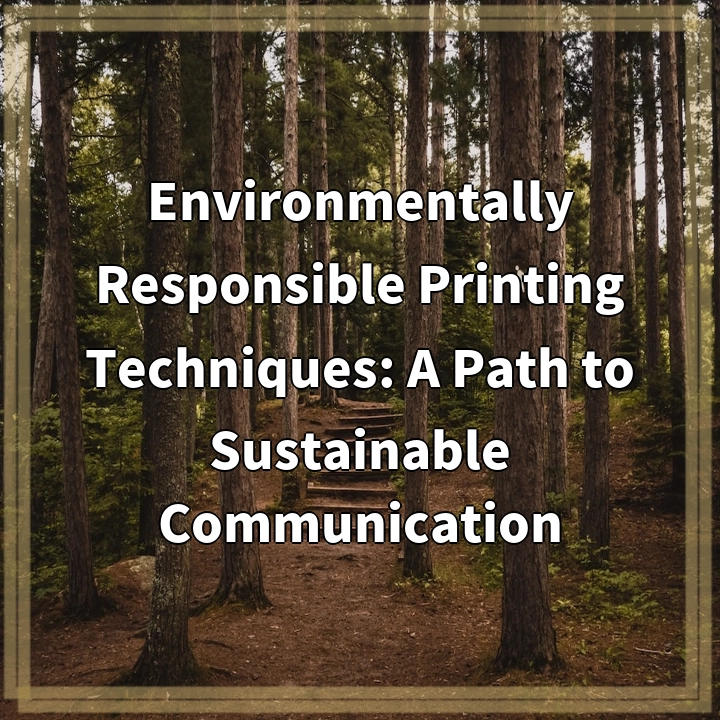
What are Environmentally Responsible Printing Techniques?
Environmentally responsible printing techniques refer to the use of sustainable practices in the printing industry to minimize the negative impact on the environment. It involves adopting methods that reduce waste, conserve resources, and utilize eco-friendly materials throughout the printing process.
Real-world Problems Associated with Conventional Printing
Traditional printing techniques have been known to have significant environmental consequences. Some of the common problems associated with conventional printing include:
1. Deforestation
Conventional printing often relies on paper derived from unsustainable sources, contributing to deforestation and habitat destruction. The demand for paper in the printing industry leads to the degradation of natural forests, impacting biodiversity and disrupting ecosystems.
2. Pollution
The use of toxic chemicals and inks in traditional printing methods can result in the release of harmful pollutants into the air, water, and soil. These pollutants not only pose risks to human health but also contribute to the deterioration of the environment and the ecosystems it supports.
3. Energy Consumption
Conventional printing processes consume large amounts of energy, mainly through the operation of machinery and equipment that power the printing production. This heavy energy consumption contributes to carbon emissions and exacerbates climate change.
4. Waste Generation
Conventional printing often leads to significant waste generation. This includes unused paper, ink, and other materials discarded after production. Improper disposal of printing waste can further pollute the environment and contribute to landfill accumulation.
5. Lack of Sustainable Practices
In many printing facilities, there is a lack of adoption of sustainable practices, such as recycling, using renewable energy sources, and implementing efficient technologies. This further perpetuates the negative environmental impact of the industry.

Solutions: Towards Sustainable Printing Practices
Addressing the environmental challenges posed by conventional printing techniques requires the implementation of sustainable solutions throughout the printing industry. Here are some key strategies:
1. Sustainable Material Choices
Opt for environmentally friendly materials like recycled paper or paper sourced from responsibly managed forests. Use vegetable-based inks instead of petroleum-based inks, as they are less toxic and more biodegradable.
2. Efficient Resource Management
Adopt efficient resource management practices to minimize waste and reduce environmental impact. This includes optimizing ink usage, implementing proper recycling programs, and reducing energy consumption through the use of energy-efficient equipment.
3. Digitalization and Paperless Options
Embrace digital alternatives to reduce reliance on traditional print materials. Utilize electronic documents, online platforms, and digital marketing techniques to minimize paper usage and decrease waste generation.
4. Eco-Friendly Printing Techniques
Explore environmentally responsible printing methods such as waterless printing, which eliminates the need for water and reduces chemical usage. Additionally, consider using digital or on-demand printing to reduce overproduction and excess inventory.
5. Collaboration and Communication
Encourage collaboration among stakeholders in the printing industry, including printers, suppliers, and customers, to promote sustainable practices. Communicate the importance of environmental responsibility and educate clients about eco-friendly printing options.















